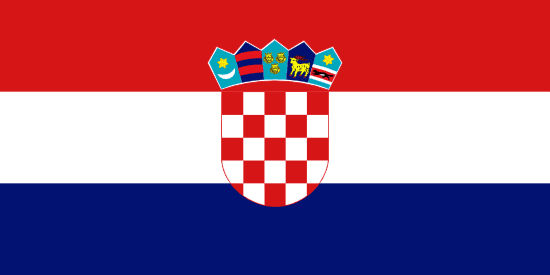"Non bene pro toto libertas venditur auro | Liberty is not sold for all the gold in the world"
About:
Dubrovnik, a city in Croatia, was founded in the 7th century by refugees from Epidaurum. It became a major maritime power in the Mediterranean by the 13th century, known as the Republic of Ragusa. The city was severely damaged by an earthquake in 1667, but managed to maintain its independence until 1808, when it was annexed by Napoleon's French Empire. After World War II, it became part of Yugoslavia. Today, Dubrovnik is a UNESCO World Heritage Site and a prominent tourist destination.
When to visit:
Dubrovnik, Croatia, is a popular tourist destination known for its stunning architecture, historic sites, and scenic coastal views. The best time to visit Dubrovnik is during the spring or fall months, typically from April to June and September to October, when the weather is mild and the crowds are smaller. Summer is also a popular time to visit but can be very crowded and hot, with temperatures often reaching above 30°C (86°F). Winter is the least popular time to visit due to colder temperatures and fewer tourist activities available.
When to avoid:
Traveling to Dubrovnik, Croatia during the peak summer months of July and August can be challenging due to the large influx of tourists, resulting in crowded streets and long waiting times at popular attractions. Additionally, the scorching heat during this time can be uncomfortable for some travelers, especially those not accustomed to high temperatures. Hotel prices tend to be at their highest during this period, making it less budget-friendly for visitors. It is advisable to consider traveling to Dubrovnik during the shoulder seasons of spring or fall to avoid the crowds and enjoy more pleasant weather conditions.
"Winter Season (Dec-Feb)"
Winter in Dubrovnik, typically from December to February, is the coldest and wettest part of the year. Average temperatures range from 5-12°C (41-54°F). Rainfall is highest in December, with an average of 140mm. The city experiences around 4 hours of sunlight per day, with significant cloud cover. Snowfall is rare but possible. A typical day for a visitor might involve bracing walks along the city walls under overcast skies, sightseeing in the old town amidst light drizzle, and enjoying warm local cuisine indoors.
"Summer (June-August)"
The warmest part of the year in Dubrovnik, Croatia, typically falls between June and August. During this time, the average high temperatures range from 28°C (82°F) to 30°C (86°F), while the average low temperatures hover around 20°C (68°F) to 22°C (72°F).
Rainfall is relatively low during these months, with July being the driest month of the year. The average rainfall in summer is around 30mm to 40mm per month. This means that while occasional showers can occur, they are usually brief and followed by clear skies.
Dubrovnik enjoys a generous amount of sunlight during the warmest part of the year, with an average of 10 to 13 hours of daylight per day. The city experiences less cloudiness in the summer, contributing to its reputation as a sunny destination.
Humidity levels in Dubrovnik during the summer are generally moderate, averaging around 60-70%. However, due to the high temperatures, it can occasionally feel quite humid.
A typical day for a visitor during this period would likely be warm and sunny, perfect for outdoor activities like exploring the city's historic sites or relaxing at the beach. The evenings are comfortably warm, ideal for al fresco dining or a leisurely stroll along the city's scenic coastline. Despite the heat, a light sea breeze from the Adriatic often provides a refreshing respite.
Language:
In Dubrovnik, the most commonly spoken language is Croatian, given that the city is located in Croatia. Croatian is the official language of the country and is spoken by the vast majority of the population. Additionally, due to the city's status as a popular tourist destination, English is also widely spoken, particularly in hotels, restaurants, and other tourist-oriented establishments. Other languages that might be heard include Italian and German.




